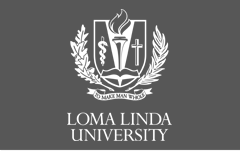Class Year
2018
School
School of Medicine
Abstract
Empty nose syndrome is a complication of nasal surgery wherein patients develop a persistent, debilitating sense of nasal obstruction and dyspnea despite clear nasal cavities. It is characterized by a discrepancy between prominent subjective symptoms and near total lack of objective findings, making it difficult to diagnose. The pathophysiology of empty nose syndrome is a complex mix of aerodynamic, physiologic, and neurological changes leading to altered airflow and diminished sensory function. Evolving treatment options consist of medical symptom control or surgical reconstruction.
Recommended Citation
Frank, Ethan and Church, Christopher MD
(2017)
"Empty nose syndrome—What do we know?,"
Loma Linda University Student Journal: Vol. 1:
Iss.
1, Article 2.
Available at:
https://scholarsrepository.llu.edu/llu-student-journal/vol1/iss1/2
Included in
Otorhinolaryngologic Diseases Commons, Pathological Conditions, Signs and Symptoms Commons, Respiratory Tract Diseases Commons

